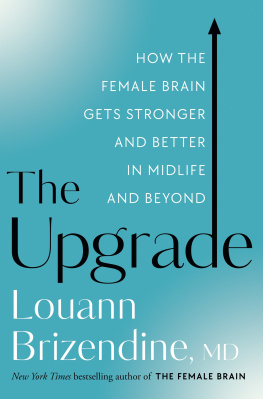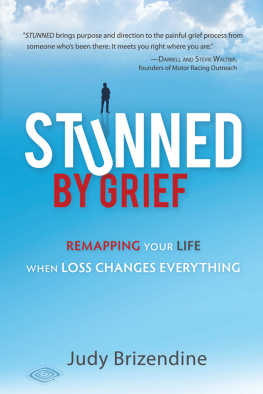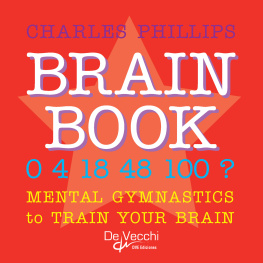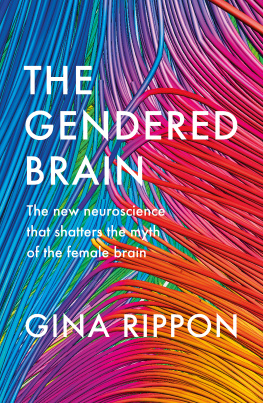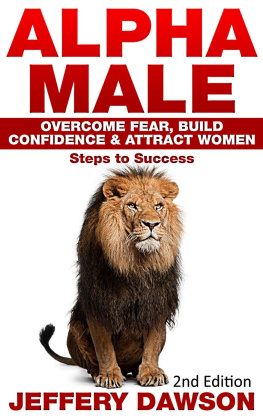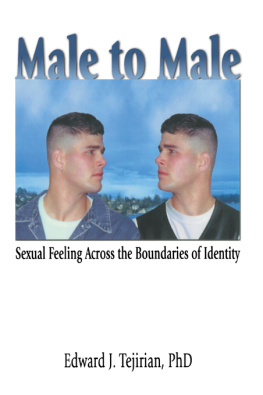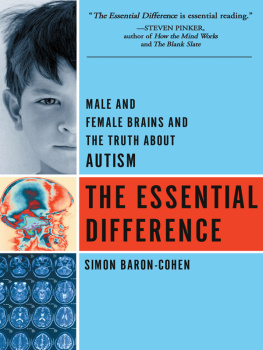Louann Brizendine - The Male Brain
Here you can read online Louann Brizendine - The Male Brain full text of the book (entire story) in english for free. Download pdf and epub, get meaning, cover and reviews about this ebook. publisher: Broadway Books, genre: Romance novel. Description of the work, (preface) as well as reviews are available. Best literature library LitArk.com created for fans of good reading and offers a wide selection of genres:
Romance novel
Science fiction
Adventure
Detective
Science
History
Home and family
Prose
Art
Politics
Computer
Non-fiction
Religion
Business
Children
Humor
Choose a favorite category and find really read worthwhile books. Enjoy immersion in the world of imagination, feel the emotions of the characters or learn something new for yourself, make an fascinating discovery.

- Book:The Male Brain
- Author:
- Publisher:Broadway Books
- Genre:
- Rating:5 / 5
- Favourites:Add to favourites
- Your mark:
- 100
- 1
- 2
- 3
- 4
- 5
The Male Brain: summary, description and annotation
We offer to read an annotation, description, summary or preface (depends on what the author of the book "The Male Brain" wrote himself). If you haven't found the necessary information about the book — write in the comments, we will try to find it.
The Male Brain — read online for free the complete book (whole text) full work
Below is the text of the book, divided by pages. System saving the place of the last page read, allows you to conveniently read the book "The Male Brain" online for free, without having to search again every time where you left off. Put a bookmark, and you can go to the page where you finished reading at any time.
Font size:
Interval:
Bookmark:
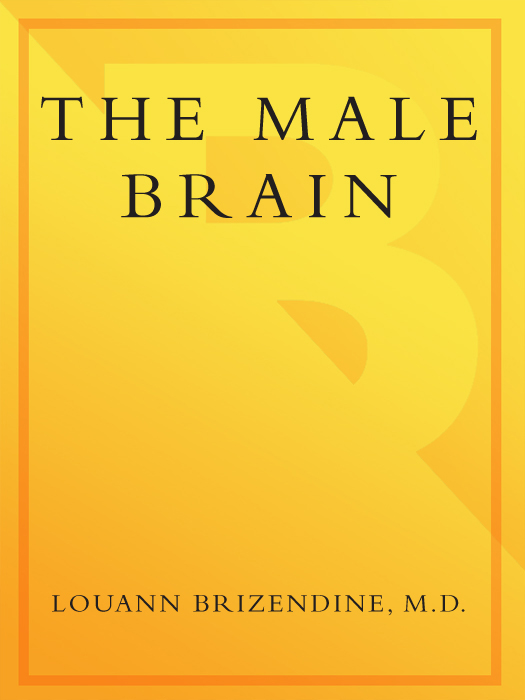
A LSO BY L OUANN B RIZENDINE , M.D.
The Female Brain
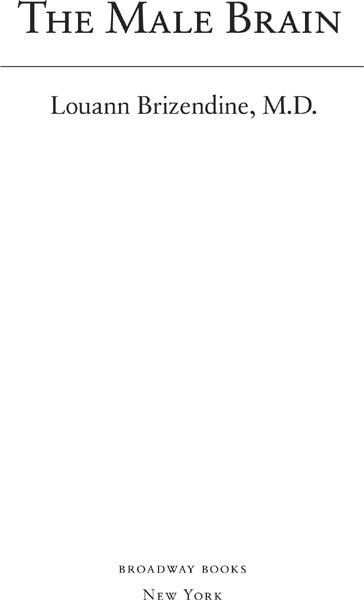
To the men in my life:
My husband, Dr. Samuel Herbert Barondes
My son, John Whitney Brizendine
My brother, William Buzz Brizendine II
And in memory of my father, Reverend William Leslie Brizendine

INTRODUCTION
What Makes a Man
ONE
TWO
THREE
FOUR
FIVE
SIX
SEVEN
EPILOGUE
The Future of the Male Brain
APPENDIX
The Male Brain and Sexual Orientation

This book had its beginnings during my educational years at U.C. Berkeley, Yale, Harvard, and U.C. London, so I would like to thank those teachers who most influenced my thinking during those years: Frank Beach, Mina Bissell, Harold Bloom, Marion Diamond, Walter Freeman, Florence Haseltine, Richard Lowenstein, Daniel Mazia, Fred Naftolin, Stanley Jackson, Roy Porter, Carl Salzman, Leon Shapiro, Rick Shelton, Gunter Stent, Frank Thomas, George Valliant, Clyde Willson, Fred Wilt, Richard Wollheim.
During my years on the faculty at Harvard and UCSF, my thinking has been influenced by: Cori Bargman, Samuel Barondes, Sue Carter, Regina Casper, Lee Cohen, Mary Dallman, Allison Doupe, Deborah Grady, Mel Grumbach, Leston Havens, Joel Kramer, Fernand Labrie, Sindy Mellon, Michael Merzenich, Joseph Morales, Kim Norman, Barbara Parry, Victor Reus, Eugene Roberts, Nirao Shah, Carla Shatz, Stephen Stahl, Marc Tessier-Lavigne, Rebecca Turner, Owen Wolkowitz, Chuck Yingling, and Ken Zack.
My colleagues, staff, residents, medical students, and patients in the Womens and Hormone Clinic. I would especially like to thank my faculty members at the clinic: Lyn Gracie Adams, Steve Hamilton, Dannah Hirsch, Jane Hong, Shana Levy, Faina Novosolov, and Elizabeth Springer.
And for their friendship and support throughout: Lynne Benioff, Marc Benioff, Diane Cirincione, Janet Durant, Adrienne Larkin, Sharon Melodia, Nancy Milliken, Jeanne Roberston, Sandy Robertson, Alla Spivak, and Jodi Yeary.
The work presented in this book has been based on and greatly benefited from the research and writings of: Marty Altemus, Arthur Arnold, Arthur Aron, Simon Baron-Cohen, Andreas Bartels, Frank Beach, Jill Becker, Sherri Berenbaum, Karen Berkley, Jeff Blaustein, Marc Breedlove, Lucy Brown, David Buss, Larry Cahill, Anne Campbell, Sue Carter, David Crews, Susan Davis, Karl Deisseroth, Geert De Vries, Catherine Dulac, Elisa Epel, Helen Fisher, David Geary, Jay Giedd, Jill Goldstein, Louis Gooren, Mel Grumbach, Andy Guay, Elizabeth Hampson, Bob Handa, James Herman, Melissa Hines, Gert Holstege, Sarah Hrdy, Janet Hyde, Tom Insel, Bob Jaffe, Doreen Kimura, Eleanor Maccoby, Dev Manoli, Helen Mayberg, Martha McClintock, Erin McClure, Bruce McEwen, Michael Meaney, Toni Pak, Barbara Parry, Don Pfaff, David Rubinow, Robert Sapolsky, Peter Schmidt, Nirao Shah, Barbara Sherwin, Elizabeth Spelke, Dick Swaab, Jane Taylor, Shelley Taylor, Rebecca Turner, Kristin Uvnas-Moberg, Victor Viau, Myrna Weissman, Sandra Witelson, Sam Yen, Kimberly Yonkers, Elizabeth Young, Larry Young, and the many other scientists whose work I have cited in this book.
I would also like to thank the foundations and supporters of my work: the Lynne and Marc Benioff Family, the Lawrence Ellison Medical Foundation, National Center for Excellence in Womens Health at UCSF, the Osher Foundation, the Staglin Family Music Festival for Mental Health, the Salesforce.com Foundation, the Stanley Foundation, and the UCSF Department of Psychiatry.
This book was written and rewritten with the assistance of Toni Robino. I owe her the greatest debt of gratitude.
I would especially like to thank Diane Middlebrook and the Literary Salon. Diane set the stage for me to begin writing; she read many drafts of my work and was, and is, an inspiration even past her untimely death.
Amy Hertz believed in this book from day one and deserves special thanks for helping shape my thinking and writing over the years.
I am very thankful to those who worked to make this book happen: Julie Sills, Stephanie Bowen, Elizabeth Rendfleisch, Mark Birkey, Gary Stimeling, Lorraine Glennon, Diane Salvatore, my ever encouraging agent, Lisa Queen of Queen Literary, and my dedicated publicity manager at Random House, Rachel Rokicki.
I am grateful to my editor at Random House, Kris Puo-polo, who supported me with intelligence, skill, and dedication through many years of writing, rewriting, starts, and stops.
I also want to thank my son, John Whitney, for graciously allowing me to use many of his personal stories and whose help in understanding the world of boys, teens, and young men has been invaluable. His sense of humor and determination continue to inspire me.
Most of all I thank my husband and soul mate, Sam Barondes, for everythinghis insights into the world of men, his wisdom, levity, intelligence, critiques, editorial advice, scientific acumen, tolerance, empathy, and love.
The Male Brain

Scientists think of brain areas like the ACC, TPJ, and RCZ as being hubs of brain activation, sending electrical signals to other areas of the brain, causing behaviors to occur or not occur.
1. MEDIAL PREOPTIC AREA (MPOA): This is the area for sexual pursuit, found in the hypothalamus, and it is 2.5 times larger in the male. Men need it to start an erection.
2. TEMPORAL PARIETAL JUNCTION (TPJ): The solution seeker, this cognitive empathy brain hub rallies the brains resources to solve distressing problems while taking into account the perspective of the other person or people involved. During interpersonal emotional exchanges, its more active in the male brain, comes on-line more quickly, and races toward a fix-it-fast solution.
3. DORSAL PREMAMMILLARY NUCLEUS (DPN): The defend-your-turf area, it lies deep inside the hypothalamus and contains the circuitry for a males instinctive one-upmanship, territorial defense, fear, and aggression. Its larger in males than in females and contains special circuits to detect territorial challenges by other males, making men more sensitive to potential turf threats.
4. AMYGDALA: The alarm system for threats, fear, and danger. Drives emotional impulses. It gets fired up to fight by testosterone, vasopressin, and cortisol and is calmed by oxytocin. This area is larger in men than in women.
5. ROSTRAL CINGULATE ZONE (RCZ): The brains barometer for registering social approval or disapproval. This I am accepted or not area keeps humans from making the most fundamental social mistake: being too different from others. The RCZ is the brain center for processing social errors. It alerts us when were not hitting the mark in our relationship or job. During puberty, it may help males reset their facial responses to hide their emotions.
6. VENTRAL TEGMENTAL AREA (VTA): Its the motivation centeran area deep in the center of the brain that manufactures dopamine, a neurotransmitter required for initiating movement, motivation, and reward. It is more active in the male brain.
Font size:
Interval:
Bookmark:
Similar books «The Male Brain»
Look at similar books to The Male Brain. We have selected literature similar in name and meaning in the hope of providing readers with more options to find new, interesting, not yet read works.
Discussion, reviews of the book The Male Brain and just readers' own opinions. Leave your comments, write what you think about the work, its meaning or the main characters. Specify what exactly you liked and what you didn't like, and why you think so.

